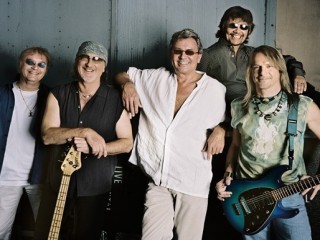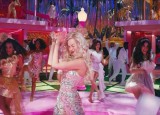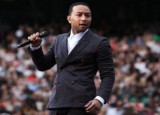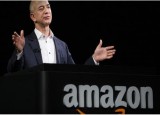
Deep Purple biography
Date of birth : -
Date of death : -
Birthplace : Hertford, England
Nationality : English
Category : Arts and Entertainment
Last modified : 2012-04-26
Credited as : Rock band, pioneers of heavy metal and modern hard rock, the loudest pop group,listed by the Guinness Book of World Records
0 votes so far
The origins of Deep Purple may be traced to a former Searchers vocalist named Chris Curtis. In 1967 Curtis sought band financing from a London textile company boss and an advertising consultant--neither of whom possessed a shred of music business background. With their money, however, a band appeared under the name Roundabout the following year. The group included Jon Lord on keyboards and Ritchie Blackmore on guitar, along with founder Curtis and two others.
By all accounts, Roundabout was terrible. Everyone, save Lord and Blackmore, were immediately replaced--including founder Curtis. Ian Paice now sat behind the drum set, and Roger Glover played bass. The new group, calling itself Deep Purple, modeled themselves on a popular American band of the day called Vanilla Fudge. They debuted in Denmark in April of 1968.
Success took many weeks. In September of 1969 the band's first single, a cover version of the American hit "Hush," reached Number Four on the U.S. singles chart. A month later, Deep Purple's first album, Shades of Deep Purple, reached Number 24 on the album chart, though it went unnoticed in England. Finally, in December, Purple solidified their status by reviving Neil Diamond's "Kentucky Woman" to the joy of enough statesiders to land a Top 40 hit.
EMI Records signed Deep Purple in England during their first year of prominence, as did comedian Bill Cosby's label Tetragrammaton in the U.S. Despite the first album's success and the rapid issuance of two more discs in 1969, The Book of Taliesyn and Deep Purple, Cosby's label folded. It was at this time that vocalist Ian Gillan joined the band. Also that year, a performance of keyboardist Lord's work, recorded as Concerto for Group and Orchestra, featured Deep Purple ably backed by the Royal Philharmonic Orchestra at London's Albert Hall. With this album, Deep Purple finally appeared on their native charts--at U.K. Number 26. The album managed only Number 149 in the apparently less classically inclined U.S.
1970 saw the release of Deep Purple in the Rock and the momentary departure of Ian Gillan, who left to play the title role in the stage musical Jesus Christ Superstar, to which his impassioned, often screaming, vocals were ideally suited. A studio recording of Superstar that appeared later in 1970 landed in the Number One spot on the U.S. album chart, a feat Deep Purple would never accomplish. The band's 1971 offering, Fireball, however, hit the top spot in the U.K. for one week.
After a U.S. tour with the Faces, Deep Purple found themselves recording at Switzerland's Montreux Casino. The band was horrified when the place burned down during a set by Frank Zappa's Mothers of Invention. Quickly recovering, though, Purple made art out of life and wrote "Smoke on the Water," a chronicle of the catastrophe. Machine Head, the album featuring that song and another hit, "Highway Star," reached the U.S. Top Ten and topped the U.K. charts for three weeks in 1972, perhaps getting an extra push in Britain from a TV advertising campaign. Eventually the album sold over four million copies. A year later, a single version of "Smoke on the Water" was released; it hit U.S. Number Four, sold a million copies, and ensured its residency on "classic rock" radio in the decades to come.
In 1973 Made in Japan, which reflected the group's international appeal, began a worldwide chart climb. That year also saw the second departure of Gillan and that of bassist Roger Glover, a mainstay of the band since 1969. Industry scuttlebutt suggested that both left due to disputes with guitarist Blackmore. Gillan began a solo career. Nonetheless, the replacement personnel did not slow the Deep Purple juggernaut; their 1974 album, Burn, hit the Top Ten on both sides of the Atlantic.
In a brief 1974 New Yorker article, a Warner Bros. publicity man representing Deep Purple crowed, "Twelve million album units. They sold twelve million album units last year." The flack added that the "Philharmonic thing made them a little classier than some." By this time the band had sold more than 15 million albums total, making them one of the most bankable bands of the early 1970s.
Of course, with success came imitators. In late 1974 an imposter posing as Ritchie Blackmore borrowed a Porsche in Iowa City, Iowa, and totaled it--this after having scammed free meals and shelter from various Deep Purple fans. And who were Purple's fans? A study of rock fans in general, discussed in John Orman's 1984 book The Politics of Rock, found that Deep Purple fans responded least well to the name of U.S. president Richard Nixon. On the other hand, these difficult-to-pigeonhole fans were also made most unhappy by the name of feminist Gloria Steinem. Purple fans also topped the study in hours per week spent listening to rock music, reporting an average of 32.5 hours, compared to the relatively paltry 20.2 hours absorbed by Led Zeppelin aficionados.
Much of the unique appeal of Deep Purple's style of rock and roll has been attributed to the "call and response" guitar work of Lord and Blackmore, which Heavy Metal Thunder author Phillip Bashe traced to the trading and answering of phrases displayed in the technique of black gospel vocal groups. But one day in 1975 it became clear that Blackmore would no longer call or respond for Deep Purple; he quit the band to form a group called Rainbow with former Elf vocalist Ronnie James Dio (who would go on to replace Ozzy Osbourne in Black Sabbath). Dio shared Blackmore's interest in medieval music, which the two began to explore in their songs.
The Deep Purple album Come Taste the Band appeared in early 1976, with Tommy Bolin securing a valuable guitar opportunity in Blackmore's place. But six months later the band called it quits and went their musical ways. Bolin returned to the U.S. to form the Tommy Bolin Band but by year's end had died of a heroin overdose in a Miami motel.
While various older concert recordings and Deep Purple reissues emerged in the next few years, the band itself was effectively a memory. Attempting to fill the void, Rod Evans, who had been ejected from an early Purple incarnation, began a "bogus" American Deep Purple tour in 1980. Legal action by Blackmore and Glover put the kibosh on that. Blackmore's name was again bandied about in 1980 when rumors began to circulate that, in a truly heavy metal move, he had purchased the house used in the filming of the supernatural thriller The Amityville Horror.
During the early 1980s the only Deep Purple alumnus to have much success seemed to be Gillan. His albums Glory Road and Future Shock hit U.K. Numbers Three and Four, respectively. These years were incredibly prolific for him, his efforts crowned by a Black Sabbath berth in 1983 when he joined that band for their final tour--one that featured three 26-foot-tall replicas of the mystical British ruin Stonehenge. (A similar incidence of stage excess was later parodied in the film This Is Spinal Tap. )
Gillan had little time to contemplate his post-Sabbath future; in 1984 Deep Purple reformed for a world tour. Dubbing themselves Deep Purple Mark II, the band issued Perfect Strangers. The record and tour promoting it grossed millions. Strangers and the band's 1987 album, House of Blue Light, made the U.K. Top Ten and did well in the U.S., too--though controversy ensued on the House tour when Blackmore repeatedly refused to play "Smoke on the Water."
In 1989 Gillan once again quit Deep Purple, citing "musical differences." After this exit the singer engaged in a collaboration with Iron Maiden singer Bruce Dickinson. The two later joined other heavy metal performers to record an album benefitting Armenian earthquake victims, the cuts including a version of "Smoke on the Water."
Deep Purple marched into the 1990s with Gillan replacement Joe Lynn Turner. The Boston Herald wrote in 1991 that should scientists wish to understand why the dinosaurs disappeared, they need only attend a couple of Deep Purple concerts and observe these former rulers "wallowing in the muck and mire of their past glory." But dinosaurs did not rock. Perhaps if they had, they would still be with us--for, well into their third decade, Deep Purple appears to have staved off extinction.
Much of the next few years was spent on the road touring. The group continued forward until 2002, when founding member Lord (who, along with Paice, was the only member to be in all incarnations of the band) announced his amicable retirement from the band to pursue personal projects (especially orchestral work). Lord left his Hammond organ to his replacement. Rock keyboard veteran Don Airey (Rainbow, Ozzy Osbourne, Black Sabbath, Whitesnake), who had helped Deep Purple out when Lord's knee was injured in 2001, joined the band. In 2003, Deep Purple released their first studio albums in five years (Bananas) and began touring in support of the album immediately. EMI records refused a contract extension with Deep Purple, possibly because of lower than expected sales. Actually In Concert with the London Symphony Orchestra sold more than Bananas.
Gillan hinted that the group may record their nineteenth studio album in February 2010, to be followed by a supporting tour. Steve Morse later revealed in an interview that the band would begin working on a new album in March. But there’s been still disagreement among the members about whether to make the new studio album. Roger Glover stated that it wouldn’t really make money any more. In early 2011, David Coverdale and Glenn Hughes told VH1 they would like to reunite with former Deep Purple Mark III line-up for the right opportunity, such as a benefit concert.The current band's chief sound engineer on nine years of tours, Moray McMillin, died in September 2011, aged 57.
Current members:
-Ian Paice – drums, percussion (1968–1976, 1984–present)
-Ian Gillan – lead vocals, harmonica, congas (1969–1973, 1984–1989, 1992–present)
-Roger Glover – bass (1969–1973, 1984–present)
-Steve Morse – guitar (1994–present)
-Don Airey – keyboards, organ (2002–present)


















